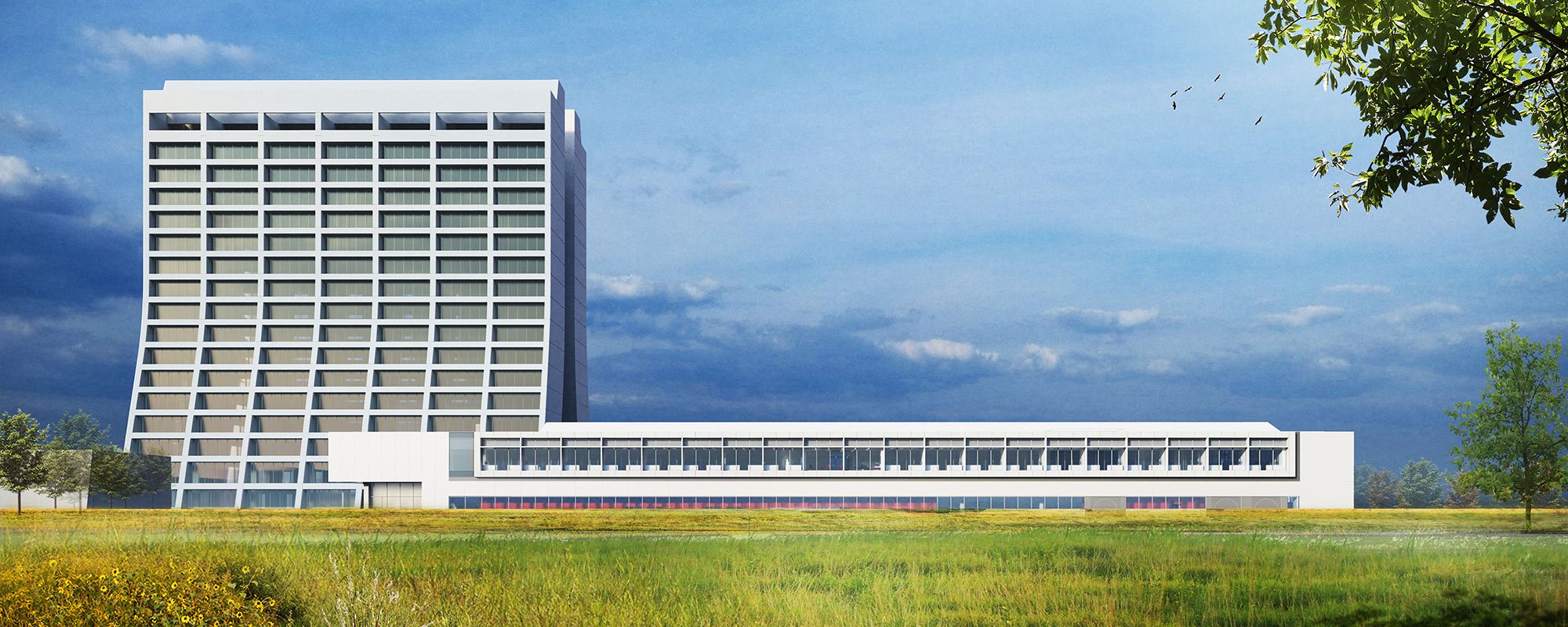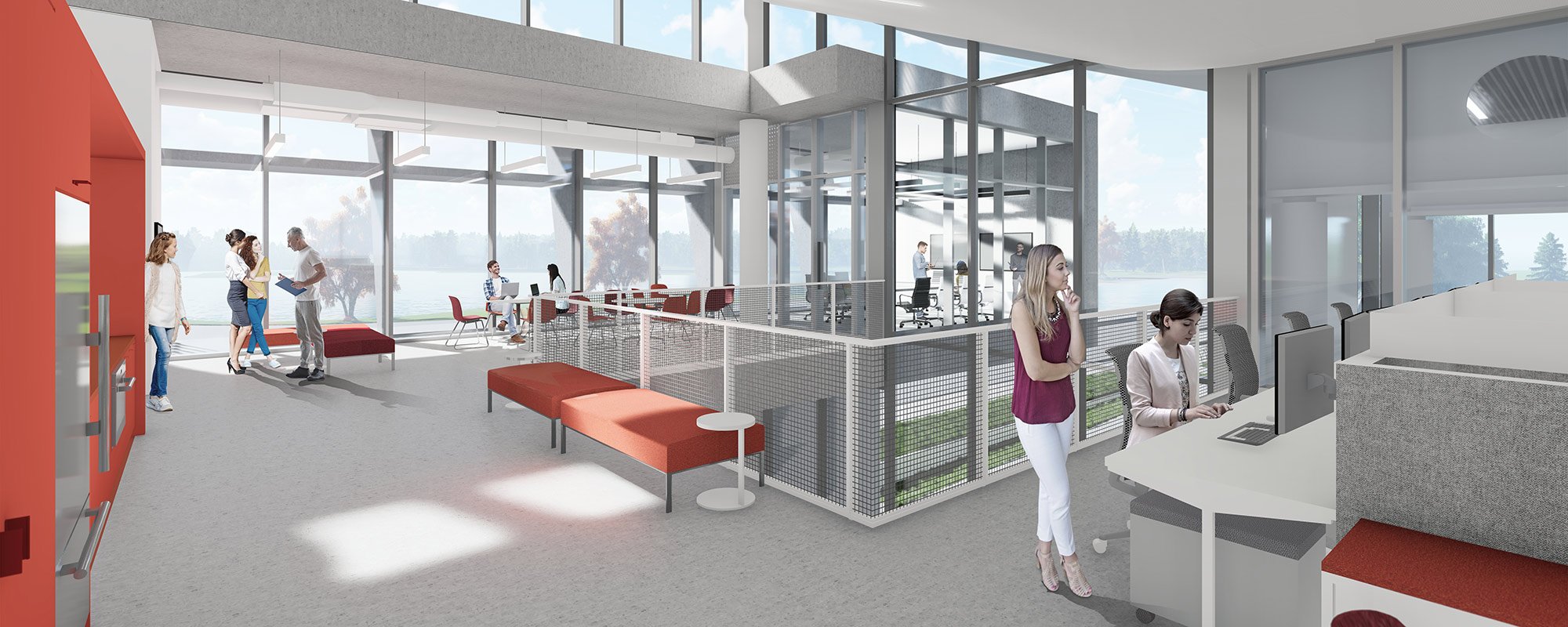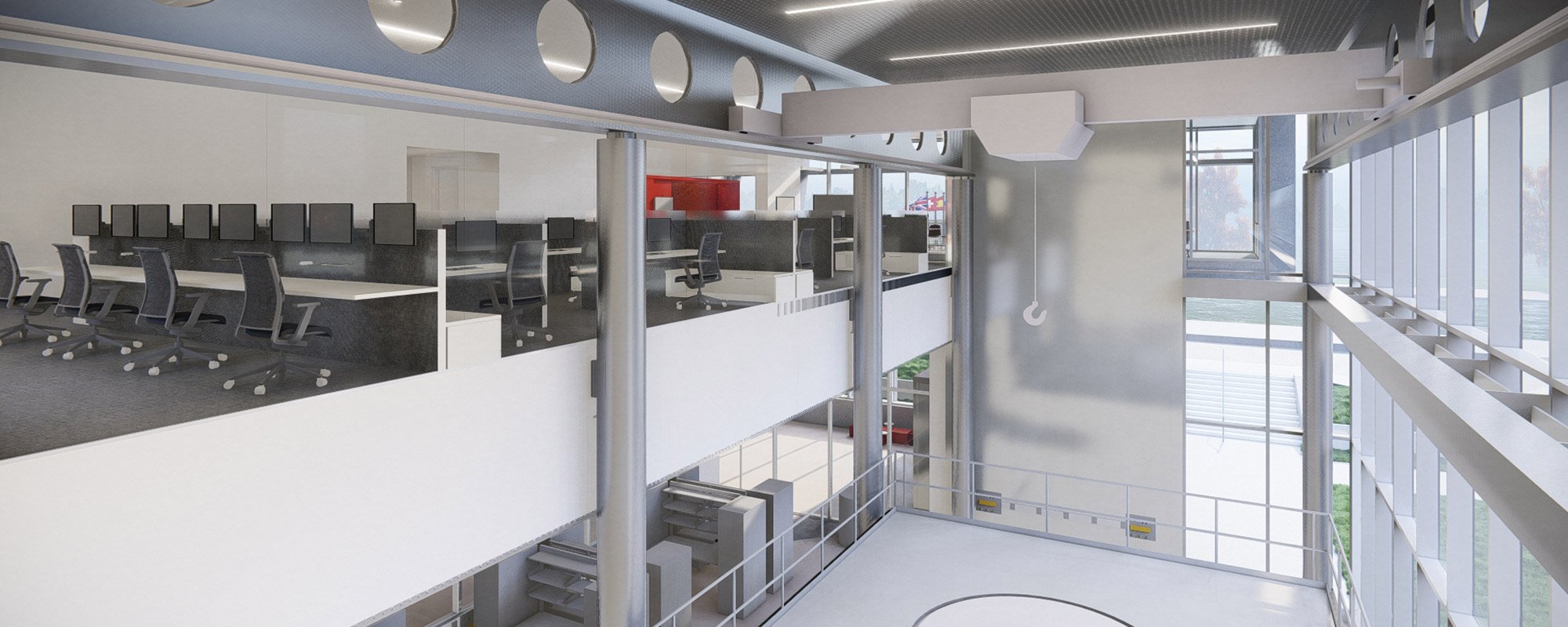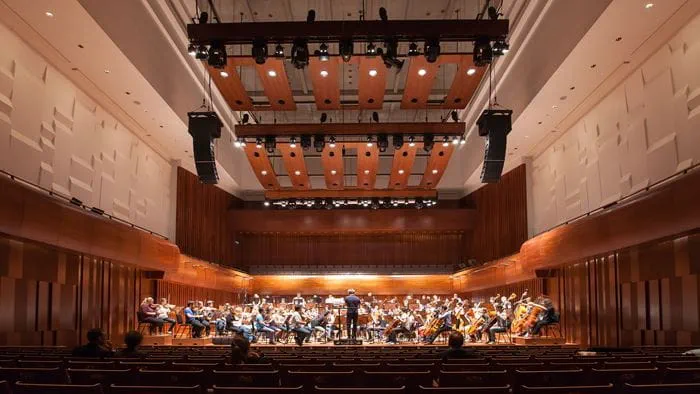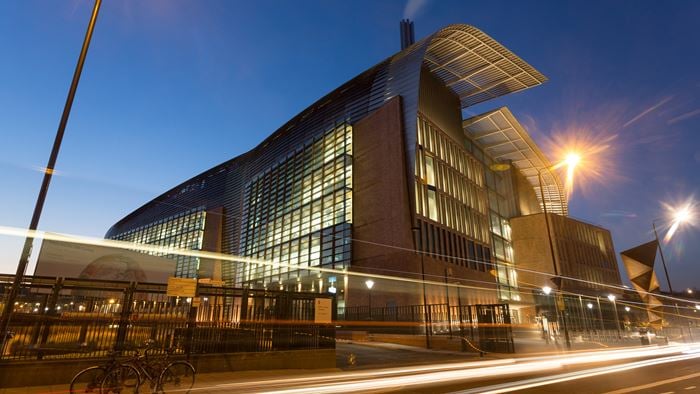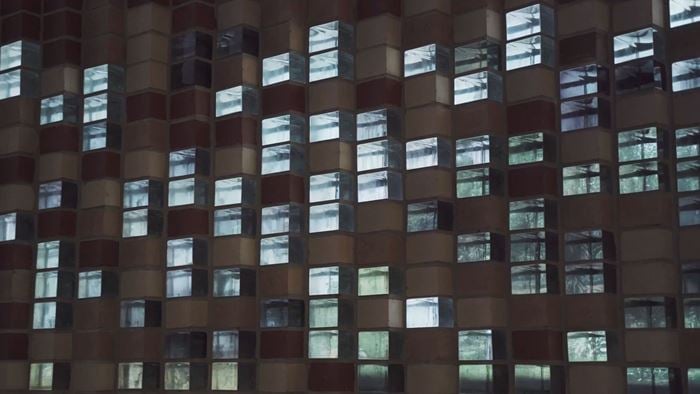Fermilab, the premier particle physics laboratory in the US, is seeking to unite researchers and engineers who are currently spread out throughout the sprawling 6,800-acre campus into a new facility: the Integrated Engineering Research Center (IERC). The new building aims to foster a collaborative spirit, improve operational efficiency by co-locating the research and engineering teams, and support ongoing particle physics research that includes the Deep Underground Neutrino Experiment.
The 80,000ft2, two-story structure is the most high-profile building constructed on the campus since the iconic Wilson Hall opened in 1973. Working with Fermilab and the project team, which includes architectural firm Perkins&Will, Arup provided structural, mechanical, electrical, and plumbing engineering services, as well as fire and life safety, lighting, information technology and communications, acoustics, and audio-visual consulting.
Fostering closer collaboration
IERC aims to foster collaboration between its engineering and research teams by providing open work areas and “hybrid” laboratories. These spaces are programmed as flexible working spaces with modular components, configurable for use as traditional open offices or as electrical engineering testing benchtops. The labs also serve as a visible example of Fermilab’s collaborative spirit to the public, who are able to tour IERC while the scientists are working.
To accommodate the daily work conducted by researchers, the ground floor laboratories feature isolated reinforced concrete slabs to accommodate vibration sensitive lab equipment and considerations were given to all working environments from an acoustic design standpoint. Acoustic features implemented throughout include sound absorbing finishes to control noise build-up, strategic furniture elements to reduce noise transmission in large open areas, and sound attenuation measures on building mechanical systems to control intrusive noise from the HVAC system.
Project Summary
80,000ft² facility
$86 milliontotal project cost
15,000 gallonArgon vat
“It is a tremendous honor to be involved in the development of IERC, a facility that will undoubtedly play an integral role in advanced physics research seeking to unlock the mysteries of our world and describe the events that unfolded in the infancy of the universe. ”
Aaron Tabares Senior Electrical Engineer
A unique design
The design of IERC complements the campus’s history, taking cues from the adjacent Wilson Hall for inspiration. A simple bridge-like structure between IERC and Wilson Hall at ground level and level one will serve as a bright, transparent reveal between the old and new buildings. To facilitate movement of equipment and supplies between the two buildings, the project team placed the high bay, vibration-sensitive labs on the ground level, with direct access to Wilson Hall and its adjacent loading dock.
A noteworthy space in the building is the Argon Cube, which houses an approximately 15,000-gallon vat of liquid argon and an interior multi-function meeting and event space known as the Quantum Science Center. The Argon Cube enables researchers to submerge newly constructed neutrino detectors in liquid argon so that they can be tested before being deployed to active research facilities, including the Long-Baseline Neutrino Facility far site at Sanford Lab, which Arup also helped design.
“It has been our privilege to be key collaborators on the IERC and to contribute to the development of world-class modernized facilities and infrastructure for Fermilab, America’s particle physics and accelerator laboratory located in the Chicagoland area. ”
Cierine Nicolas Managing Principal of Arup’s Chicago Office
Ensuring sustainability and resilience
Arup provided energy modelling services for the project and collaborated with Perkins&Will in the development of the façade and a 300ft-long daylighting shelf, which brings in plenty of daylight to reduce energy use.
In consideration of increasing annual rainfall around the Chicago area as a result of climate change, an extensive green roof was designed to reduce impervious roof finishes and reduce rainwater discharge into the campus’s limited storm sewer system.
Preparing for future flexibility
The facility is designed to be flexible, with program spaces that uses modular components. To accommodate future changes to how the space is used, the upper level is designed for a live load of 100 pounds/ft2 instead of the typical 50 pounds/ft2 common to most office spaces. This will allow for future program changes that may be more demanding from a strength and serviceability perspective. The upper level also includes two-inch-deep trenches aligning with the typical office module spines, which allow electrical and communications cabling feeds to be connected to workstations anywhere along the length and reconfigured as needed without the need for dropdowns from the ceilings.
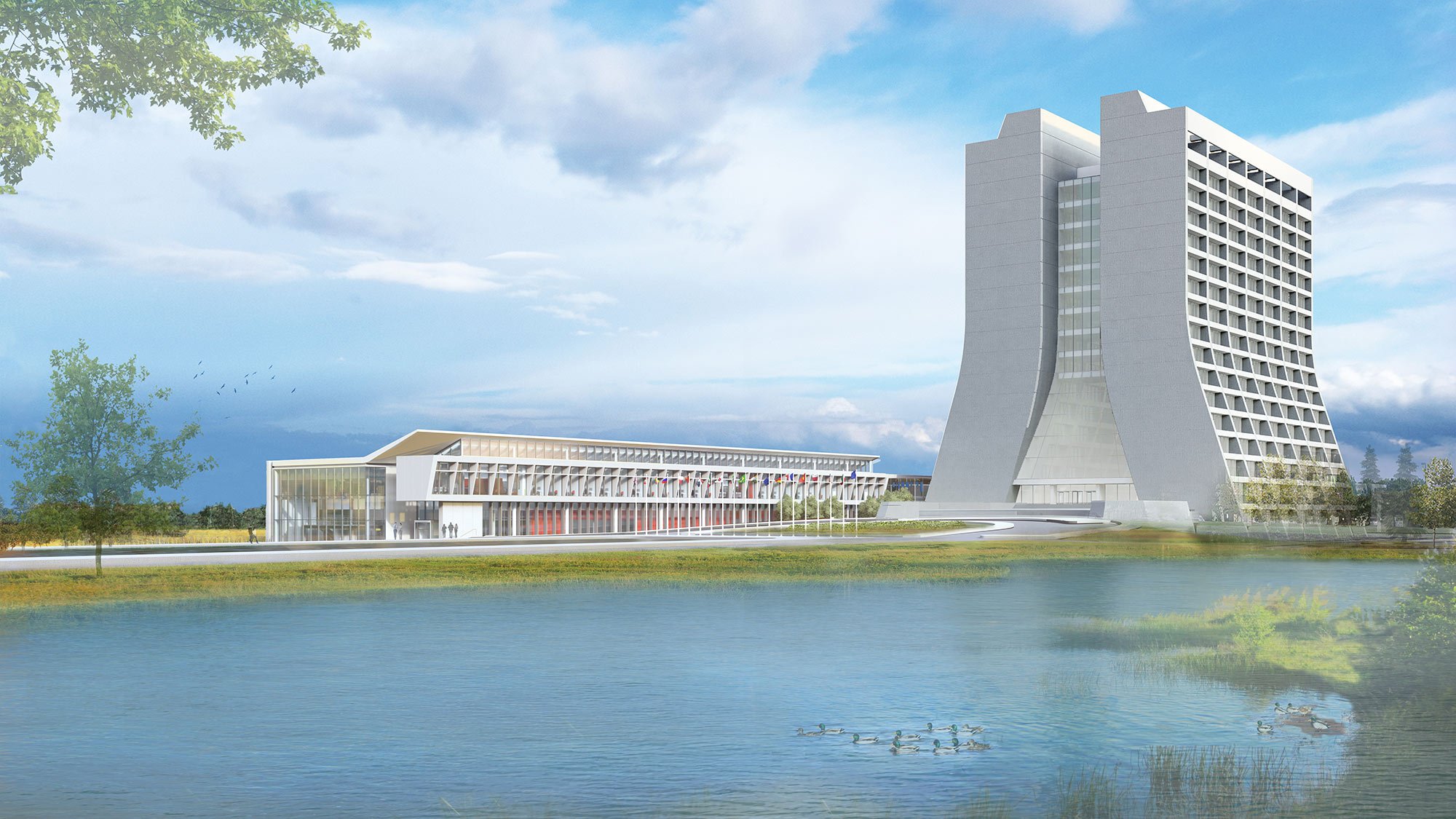 ;
;



